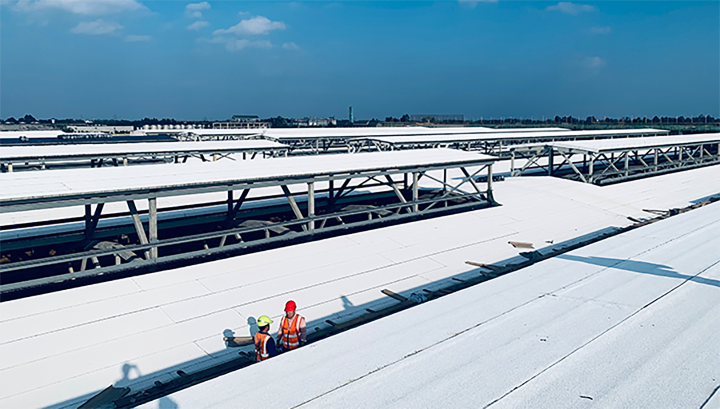
دېكابىر . 07, 2024 01:22 Back to list
How long can you expect a second layer of shingles to remain effective?
Understanding the Lifespan of a Second Layer of Shingles
When it comes to roofing, one of the most common materials used is asphalt shingles. Homeowners often consider adding a second layer of shingles over an existing roof as a cost-effective solution to extend the life of their roofing system. However, many questions arise regarding the longevity and durability of a second layer of shingles, especially in varying weather conditions. In this article, we’ll explore how long a second layer of shingles can last, the factors affecting their lifespan, and important considerations for homeowners contemplating this option.
Lifespan of a Second Layer of Shingles
On average, asphalt shingles can last anywhere from 15 to 30 years when properly installed and maintained. When a second layer is added, however, the lifespan of the new shingles can vary significantly. Generally, a second layer can be expected to last around 10 to 20 years, although several factors can influence this outcome.
Factors Affecting Lifespan
1. Quality of Shingles The type and quality of shingles used for the second layer play a critical role in how long they will last. Higher-end architectural shingles often come with longer warranties and are designed to outperform standard three-tab shingles. Investing in better-quality shingles can provide greater longevity.
2. Installation Correct installation is crucial. If the second layer is not installed properly, it may lead to inadequate ventilation or poor sealing, which can ultimately shorten the lifespan of the shingles. It’s important to hire experienced roofing professionals who are well-versed in the best installation practices.
3. Weather Conditions The local climate can significantly impact the longevity of the shingles. Areas that experience extreme weather conditions—such as heavy rain, snow, high winds, or intense heat—can lead to faster deterioration. Shingles may succumb to wind uplift, hail damage, or thermal expansion, and these risks should be assessed before adding a second layer.
how long does a second layer of shingles last

4. Roof Pitch and Design The slope of the roof also affects shingle lifespan. A steeper roof can provide better drainage, reducing the likelihood of water pooling that could penetrate the shingles. Conversely, a flatter roof may accumulate debris and water, which can hasten wear and tear.
5. Ventilation Proper attic ventilation is essential in prolonging the life of the shingles. Poorly ventilated attics can lead to higher temperatures, which can warp shingles and cause premature failure. Ensuring that your roof has adequate ventilation will contribute to the durability of both layers.
Pros and Cons of Adding a Second Layer
While adding a second layer of shingles can save money and time, it is essential to consider the benefits and drawbacks
Pros - Cost-Effective It generally costs less than a complete roof replacement. - Time-Saving The installation process for a second layer is typically quicker since it avoids the need to tear off the existing shingles. - Increased Insulation The additional layer can provide better insulation, potentially lowering energy costs.
Cons - Weight Concerns Roof structures are designed to support a certain weight. Adding a second layer may exceed this limit, potentially leading to structural issues. - Limited Lifespan As mentioned, a second layer may have a shorter lifespan compared to a full replacement, necessitating repairs sooner than expected. - Compatibility Issues If the existing shingles are damaged, a new layer won’t rectify underlying problems, and these issues may worsen over time.
Conclusion
In conclusion, while a second layer of shingles can offer a temporary solution to prolong the life of your roof, it is vital to understand the trade-offs involved. Homeowners should weigh the costs and benefits while considering factors such as materials, installation quality, and local environmental conditions. If you decide to go this route, ensure that you work with reputable professionals who can help you maximize the lifespan of your roofing system. Ultimately, the best course of action may vary based on individual circumstances, and sometimes investing in a full roof replacement might be the wiser choice in the long run.
-
Small Clay Roof Tiles for Durable & Stylish Roofing Red & Custom Options Available
NewsJun.24,2025
-
Lifetime Roof Shingles – Durable Roofing Solutions for Decades
NewsJun.10,2025
-
Top Roofing Shingles Types Compare Different Types of Architectural Roofing Shingles for Your Home
NewsJun.10,2025
-
Affordable Asphalt Shingle Roll Durable & Easy Flat Roof Solution
NewsJun.09,2025
-
Metal Asphalt Look Roofing Durable Shingle-Style Options
NewsJun.09,2025
-
Premium Clay Valley Roof Tiles Durable & Eco-Friendly
NewsJun.09,2025







